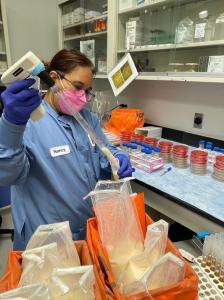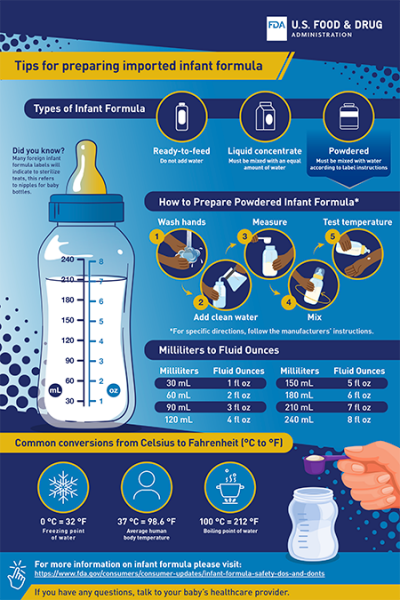I Am ORA Profile: Nancy Miranda
Microbiologist Nancy Miranda on what it’s like tracking down a dangerous pathogen, especially when the topic hits close to home.
"It’s like trying to find a needle in a haystack."
Hi, I’m Nancy Miranda, a microbiologist with the FDA’s Office of Regulatory Affairs’ (ORA) Southeast Food and Feed Laboratory (SFFL) in Atlanta. The proverbial needle I’m talking about is Cronobacter, one of the most troubling groups of pathogens to exist in dry foods, including powdered infant formula.
Cronobacter bacteria are so challenging to food safety researchers like me in that they’re evasive, potent even in tiny amounts, and—perhaps most brutally of all-—harmful to those least able to defend themselves. This vulnerable group includes babies, the elderly, and those with compromised immunity. Fortunately, illnesses and deaths due to Cronobacter are rare, but for those who are vulnerable, including premature babies, the bacteria have the potential to cause life-threatening infections of the blood and brain. In fact, Cronobacter’s association with infants is so well known that scientists originally named it after an ancient deity of ruthless reputation—Cronus—the Greek god who so feared losing power to his progeny that he ate his own offspring.
And this precious fragility of babies is something I understand well.
In 2004, I gave birth to twin boys. They were perfect—the littlest of miracles—but born 10 weeks too soon. With a combined weight of only 6 pounds and 8 ounces, my babies, Bryan and Christopher, spent over a month in the ICU. Most frightening, but not unusual for preemies, was that Bryan suffered from hydrocephalus (a swelling in the brain), which, thankfully, doctors were able to successfully address. In time, both boys gained ounces, and eventually pounds. Another factor that contributed to their much-welcomed growth: powdered infant formula.
Several years later, and still very grateful for my children’s medical care and nutrition, I find myself at ORA’s SFFL lab in a hunt for Cronobacter—and most specifically C. sakazakii—in infant formulas. This work includes efforts to expand on proven methodologies for handling, identifying, and analyzing the tough-to-crack, opportunistic bacteria, which are so tolerant of heat and dryness that they can lie dormant for years in dry, desiccated substances before springing to life again.
The future is bright, though. Our urgent, mission-critical work scrutinizing powdered infant formulas has now been expanded to include two additional testing laboratories. My ORA colleagues on the frontlines are working tirelessly, too, conducting inspections and streamlining imports to help facilitate the resumption of safe infant formula production in this country, while also fortifying our critical infant and medical formula supplies with safe products from other parts of the world.
Our consumers and our babies deserve to be safe. I now have three boys—each of whom inspires the work I do and my commitment to making our nation’s food products as safe as possible for everyone...especially for the most vulnerable among us.
My name is Nancy Miranda and #IAmORA!
For more on FDA’s around-the-clock efforts to boost supplies of safe formula, as well as for important updates for parents and caregivers concerned about their formulas, visit:
Click to view full-size image (PDF)



